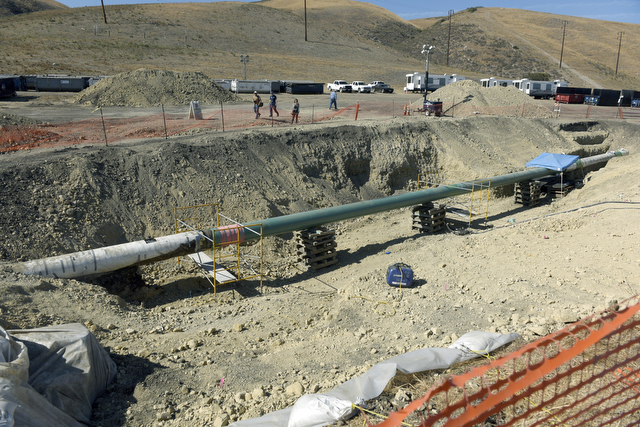Huge Discrepancy in Pipeline Corrosion Measurements
Plains All American Was Digging and Pigging, But Were They Fibbing?

Near the six-inch cavity in the now-infamous Plains All American pipeline near Refugio State Beach, the wall thickness of the pipe measured a gossamer 0.0625 inches, according to a document released by the federal Pipeline and Hazardous Materials Safety Administration (PHMSA) yesterday. Before corrosion, the original wall thickness was 0.344 inches. A bit of simple arithmetic reveals that about 82 percent of the pipeline had worn away.
If those figures don’t suggest the pipeline, which runs at 120 degrees Fahrenheit, was an accident waiting to happen, the federal government does. Regulations demand immediate repair at 80 percent. Even more troubling is the fact that, on May 5, just two weeks before the spill, Plains All American reported metal loss of only 45 percent.
Typically, such figures are supplied by third-party inspectors often referred to as “pig vendors” because they employ an instrument called a smart pig (or pipeline-inspection gauge) that is equipped with sensors and travels along the inside of a pipeline.
As explained by Plains safety director Patrick Hodgins, “These tools return data that typically requires months of analysis to generate actionable findings. In many cases, we conduct confirmation digs to correlate the information from the inline inspection tool with the condition of the pipe below the surface. In the industry, we refer to this proactive maintenance activity as ‘pigs and digs.’”
Plains declined to name the vendor they used or to comment on the corrosion measurements. “The answers to your questions are part of an ongoing investigation, and for this reason, cannot be answered at this time,” said spokesperson Michael Eidman via email.
It’s fairly typical for preliminary survey data to change after verification, explained pipeline integrity consultant Andrew Kendrick, who has no connection to Plains or the spill. Even so, he said, “I’ve seen some bad runs, but I don’t think I’ve seen one where they mistake 80 [percent] for 45 [percent].”
Furthermore, a pipeline operator can skate by with incidences of corrosion over 80 percent if they are localized. The repair requirement kicks in when the vendor refers to the corrosion as “general,” meaning it affects the structural integrity of the pipeline wall. As Kendrick put it, “so many pits have gotten together that it doesn’t act like a little hole; it acts like now you’re going to break the eggshell.”
Corrosion, a common form being rust, refers to the tendency of processed metals to return to their most stable chemical state, namely the one in which they were originally mined from the ground. Heat accelerates corrosion. On oil and gas pipelines, this process is inhibited by “cathodic protection” (CP) systems, which entail placing a coating on the pipe and running an electric current through it.
Although there are minimum federal requirements for the robustness of these systems — met by Plains All American in Line 901 — pipeline investigator Richard Kuprewicz said those requirements have little bearing on effectiveness. That depends on factors that are extremely site-specific, said Kuprewicz, who is not investigating the Refugio incident.
The CP will likely be one element considered in PHMSA’s final analysis of the pipe failure, one that industry observers hope will answer the question of how Pipeline 901 could reach 82 percent corrosion and how that figure could be so underestimated.
“My guess,” Kendrick said, “is that the last run showed significant corrosion, but it didn’t meet the [80 percent] criteria.” The fact that the previous inspection was completed only three years ago, even though the feds only require them every five years, would seem to corroborate such speculation. In fact, the PHMSA document, an amendment to a Corrective Action Order originally issued by the sub-agency of the Department of Transportation on May 21, points out that the busted area of the pipeline had been repaired three times since a 2012 survey.
While corrosion clearly led to the pipe’s failure, there could also have been contributing factors. Most ironic would be if the smart pig were the proverbial straw that broke the camel’s back. “In cases of significantly corroded pipeline,” said Kendrick, “the smart pig itself could cause damage.”


